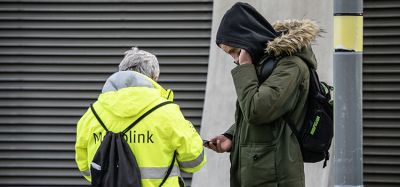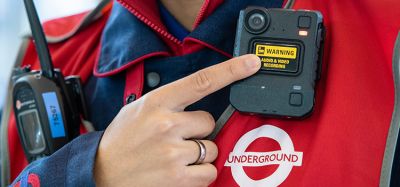CCTV surveillance in focus for transport security
- Like
- Digg
- Del
- Tumblr
- VKontakte
- Buffer
- Love This
- Odnoklassniki
- Meneame
- Blogger
- Amazon
- Yahoo Mail
- Gmail
- AOL
- Newsvine
- HackerNews
- Evernote
- MySpace
- Mail.ru
- Viadeo
- Line
- Comments
- Yummly
- SMS
- Viber
- Telegram
- Subscribe
- Skype
- Facebook Messenger
- Kakao
- LiveJournal
- Yammer
- Edgar
- Fintel
- Mix
- Instapaper
- Copy Link
Posted: 11 May 2010 | Pauline Norstrom, Chairman of the British Security Industry Association's CCTV Section | 5 comments
In today’s testing global environment, the requirement for robust security measures on public transport across Europe with millions of passengers carried daily has never been greater. Crucially, those responsible for ensuring the smooth running of this critical service have to contend with a broad range of challenges, whether that is petty vandalism, assaults on staff, fraudulent injury claims or, most worryingly, large-scale terrorist attacks such as 7/7 in London and the tragic events in Madrid.
In today's testing global environment, the requirement for robust security measures on public transport across Europe with millions of passengers carried daily has never been greater. Crucially, those responsible for ensuring the smooth running of this critical service have to contend with a broad range of challenges, whether that is petty vandalism, assaults on staff, fraudulent injury claims or, most worryingly, large-scale terrorist attacks such as 7/7 in London and the tragic events in Madrid.
In today’s testing global environment, the requirement for robust security measures on public transport across Europe with millions of passengers carried daily has never been greater. Crucially, those responsible for ensuring the smooth running of this critical service have to contend with a broad range of challenges, whether that is petty vandalism, assaults on staff, fraudulent injury claims or, most worryingly, large-scale terrorist attacks such as 7/7 in London and the tragic events in Madrid.
In recent years we have witnessed at first hand how the transport CCTV infrastructure plays a vital role in tackling offenders. This was evidenced, for instance, by the availability of high quality CCTV images, which helped to secure convictions for conspiracy to murder of those involved in a failed follow-up attack to the tragic events of the London bombings on 7/7, with nearly 28,000 CCTV recordings gathered by police from CCTV cameras on buses, trains and at stations.
So what types of CCTV technologies are now making their presence felt for transport on the ground? Here we will pay particular attention to two major growth areas for surveillance: digital mobile CCTV solutions and intelligent Video Content Analysis (VCA).
Mobile matters
Turning to CCTV on the move, we are now seeing the widespread deployment of ruggedised mobile DVRs (Digital Video Recorders) on trains and buses, and other parts of the public transport infrastructure. When fitted, these compact, self-contained systems are capable of continuously monitoring the inside of a carriage or bus. On trains there is even the potential to conduct remote surveillance on key routes, which complements the existing permanently positioned CCTV infrastructure.
The origins of this technology can be traced back to the aviation sector where, since the mid-1990s, such systems have proven their worth on commercial passenger jets. Here, digital recorders linked to internal and external cameras have been able to assist aircrew and attendants by providing critical monitoring of the cockpit door, passenger cabin, cargo hold and the undercarriage of aircraft.
Now, spurred on by more sophisticated software, ever-increasing computing power and the advent of low-cost, high-capacity disk drives, the economics and refinement of these mobile multi-camera digital recorders is such that they are proving an attractive proposition for installation on the ground. As well as the obvious potential of this technology to address the vulnerability of extensive public transport infrastructure in the light of events such as 7/7, by helping operators to spot unusual activity, it can also be adopted to tackle the day-to-day headaches of vandalism and assaults on passengers and staff.
Rail reassurance for the public
Applied as an overt measure with the cameras in public view, experience suggests that this provides a significant deterrent to criminal damage, delivering much-needed reassurance to the travelling public. This positive benefit was underlined in a trial in the Netherlands by NS (Netherlands Railways) on eight Sprinter trains on the Zoetermeer Stadslijn (City Line), which found that 60% of commuter train passengers felt safer with digital recorders and cameras installed. Train staff also believed that their working environment had improved and damage due to vandalism plummeted by 45%. During the test period, video recordings were reviewed on several occasions, assisting the police and the train operator to solve a number of incidents.
School bus surveillance
With the issue of dangerous student behaviour on school buses, CCTV is now being widely applied to this mode of transport. One of the real success stories of this use of CCTV comes from Tallahassee in Florida, which has been a pioneer of mobile CCTV technology and has rolled out such systems in more than a hundred of their iconic yellow school buses. Operators have found a major improvement in behaviour on the buses where it has been installed, with the key benefits being the ability to allow monitoring on the move and, crucially, the recording of vital evidence to assist school administrators in disciplining disruptive students responsible for actions ranging from vandalism to assault. Tallahassee has also seen a real advantage in the potential for video/ audio footage to be shown to parents and, if necessary, supplied to law enforcement officials.
Closer to home, Greater Manchester Passenger Transport Executive (GMPTE) are in the throes of upgrading the on-board CCTV for their own yellow school bus services in the form of the latest mobile DVRs (Digital Video Recorders). The adoption of more modern digital CCTV systems is delivering practical advantages for GMPTE. Previously they found physically downloading CCTV recordings fraught with problems – not least of these was having the vehicle in the right place when they needed to retrieve data. The latest Wi-Fi systems are proving to be more user-friendly with automatic wireless downloading as the vehicle enters the depot.
Fighting the fraudsters
In recent years, a serious headache for bus operators across Europe has been an escalation in the number of fraudulent claims for injury. Prior to the introduction of CCTV systems on buses it was difficult for operators to prove or disprove such patently fraudulent claims – it was simply their word against the claimant – and often the only realistic option was to settle out of court to avoid costly legal fees.
Thankfully, with new mobile digital CCTV solutions, the battle against the fraudsters has started to move in favour of the bus companies. We are now seeing systems being rolled out across bus fleets which not only assist with the safety and security of passengers, but are also able to link images with information such as a vehicle’s position, speed, use of indicators and braking forces. Most fraudulent actions can be readily identified and dismissed, for example showing that the bus was being driven normally without excessive braking, acceleration or steering input. The upshot of this is that bus fleets are able to keep a lid on claims, which would otherwise have a detrimental impact on the profitability of their business.
Unlocking the potential of Video Content Analysis
Turning to VCA, it is perhaps not surprising, given the enormity of the task associated with watching over such a geographically extensive transport network, that we have seen the emergence of ever-more sophisticated CCTV-based surveillance techniques. One of the key drivers, where the future development of CCTV in the transport environment is concerned, is a pressing desire to move away from conventional monitoring and recording solutions which are struggling to cope with the sheer volume of activity across, for example, a typical railway network.
Historically, operators in control rooms have been tasked with viewing banks of monitors, displaying CCTV images, from stations across a specific line or region. A key determinant of success in this approach is the experience and attention level of the operator concerned, specifically their ability to separate suspicious activity from the otherwise benign.
Identifying activity
What transport operators are now building in to their CCTV systems from the ground-up, with the assistance of the security industry, is the potential to automatically alert their operators using techniques such as VCA regarding carefully defined types of activity at the earliest possible stage. This could range from the ability to detect an obstruction on a railway level crossing, unattended baggage on a station concourse or even smoke in the confined environment of a tunnel. Such an intelligent approach, with attention focused on the most relevant CCTV footage, has the potential to allow resources to be allocated more effectively and remedial action to be taken before incidents have a chance to escalate to a more serious and in some cases life threatening level.
Defining Video Content Analysis
Looking in more detail at the growing area of CCTV-based VCA – also referred to as Intelligent Video Analytics (IVA) – this is the name commonly given to the automatic analysis of CCTV images to create meaningful information about the content. The scope of VCA is certainly impressive and expanding all the time. For instance, it can now be applied for external and internal intruder detection; the monitoring of buildings for health and safety; people counting; automatic event and incident detection; safety enhancements for public areas; smoke and fire detection and camera failure or sabotage detection. In theory, any ‘behaviour’ that can be seen and accurately defined on a video image can be automatically identified and an appropriate alert raised.
Potential applications
Focusing on some specific applications for VCA, one capability of particular interest for railways is the potential to set up a detection tripwire solution. This enables the creation of virtual tripwires either along existing fence lines or in areas where physical security is impossible or impractical such as railway tracks whose extensive nature can prove challenging for more conventional approaches. In this case, alarms associated with the detection tripwire can be enabled in either (or both) directions across the software generated threshold. This ability to identify intruders rapidly, in real-time, can potentially mean the difference between reactive and proactive steps being taken and so minimises the risk of damage to the transport infrastructure and of injury to the trespassers themselves and, crucially, railway staff.
An associated approach, taking advantage of the potential to use VCA to create a virtual tripwire, is people counting. Here, a counting algorithm is also implemented – the advantage being that people can be counted entering or leaving a specific area. This could be invaluable in a rail or bus station environment to raise an alarm should passenger densities exceed predetermined safety thresholds in a specified location. On platforms, for example, action could then be taken to prevent further people entering an area until it is safe to do so
A further VCA option, being increasingly taken up, is known as object left/object removed. Object left can prove especially useful in situations where a bag, or other item, has been left unattended, helping to alert operators so further action can be taken to ascertain whether there is an innocent explanation – perhaps a passenger is in a shop nearby on the station concourse – or, crucially, it is indeed a suspicious package which may necessitate immediate evacuation of the immediate area.
Another possible use for object left could, potentially, be to monitor level crossings so that train drivers can be alerted in situations where a vehicle may have broken down or stalled on the track.
Turning to fire in the context of tunnels, this can be particularly challenging as evidenced by the Channel Tunnel fire in 2008, which caused £50 million worth of damage. As a result there has been increasing interest in the application of CCTV cameras in conjunction with VCA, specifically video smoke detection, to provide vital early warnings of incidents. Tunnels present an extremely testing proposition as a consequence of their small cross sectional area, as well as the fact that some modern tunnels can stretch many miles in length making access more problematic than in many other scenarios, and the higher heat release rate associated with fires which develop in this environment.
Thankfully, video smoke detection overcomes these problems due to its design and complex algorithms. By programming the software to look for anticipated motion patterns of smoke over a specified area within a camera image, and analysing pixel changes, video smoke detection has the potential to deliver an exceptionally fast response – typically in seconds.
The need for guidance on Video Content Analysis
For some time now, when it comes to VCA, the BSIA has recognised that there has been a pressing need in the marketplace to provide clear and effective guidance for end users, such as railway operators, who are looking to utilise this key technological development in CCTV, as well as offering specifiers general advice to assess suppliers and their products.
With this in mind, the CCTV Section’s Technical Committee (TC/10) has been working intensively for 18 months to develop an appropriate industry guide to VCA. As part of this process we have taken submissions from a number of parties, including vendors and end users, the ultimate aim being to ensure that the right information is at hand, allowing searching questions to be posed to potential providers, so this technology can be applied to best effect on the ground.
There is little doubt, when specified and installed correctly, that VCA can have a positive impact on the effectiveness and return on investment of CCTV systems by adding enhanced or increased capabilities to detect and analyse post-event video. However, the sad fact is that with the emerging nature of VCA – it has become a reality only in the last three to five years – the number of producers entering this new and dynamic field, the range of products, and the installation implications, can present an extremely confusing picture for potential buyers and the transport sector is no exception in this regard.
To help bring some clarity to VCA, key areas addressed within the BSIA’s new VCA document include the main elements of a VCA system and a description of the two main types of VCA platforms. The document distinguishes between Central or Core based packages that are typically rack mounted for use in CCTV control rooms, with the video sources analysed centrally, and Edge based solutions, where a smaller – occasionally ruggedised – unit is integrated within or placed close to the CCTV camera. The term ‘embedded’ is also defined as being when VCA software is designed into the CCTV camera, DVR (Digital Video Recorder) or other unit, either as part of a dedicated design or an add-on card.
In addition, the guide outlines how analysis actually works in practice; the importance of perspective setting – the camera view; the key technology challenges – specifically the Detection Probability and False Alert Rate; the impact and benefits of VCA; what VCA can do; when VCA should be considered; the selection process for systems and cameras and, crucially, presents some detailed questions to pose to providers.
Informed decisions
The publication of our VCA industry guide should, we believe, help to demystify VCA and assist end users, such as the transport industry, to make informed decisions when they are considering the introduction of VCA technology for the purposes of security, safety, people management or event counting. A copy of the guide can be downloaded by visiting www.bsia.co.uk/publications.
Travelling to the future
Moving forward, the message has to be that, when applied correctly, CCTV has proven time and again, whether it is mobile systems fitted to buses and trains or the adoption of sophisticated VCA, that it can make a positive contribution to the smooth and effective operation of transport networks.
Related topics
Security & Crime
Issue
Issue 2 2010
Related organisations
British Security Industry Association (BSIA)
Related people
Pauline Norstrom








Video surveillance cameras are by far the best and effective way to protect your home, family and belongings from theft and other criminal activities. No matter wherever you are, you can keep an eye on your home and personal property by installing video surveillance cameras in your home.
By programming the software to look for anticipated motion patterns of smoke over a specified area within a camera image, and analysing pixel changes, video smoke detection has the potential to deliver an exceptionally fast response – typically in seconds.
Surveillance cameras play an important role in monitoring work, houses and in the field of freight transport management.
This is always a must. We should provide people safety in the streets, establishment, and houses. Cameras are a good source of evidence in every accident.
This is an excellent overview of specific security needs of the transport sector. Safety, security and fraud prevention are made even more complex in a sector that has so many moving assets.